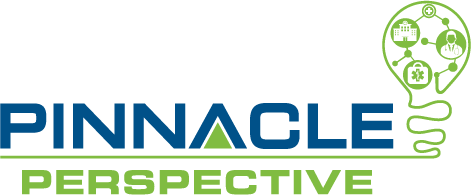
Revolutionizing Medicare with ACO Primary Care Flex Model: Enhancing Access and Equity
Every primary care physician (PCP) in the United States should be integrated into an accountable care model. The primary objective of accountable care models is to provide all participating healthcare providers with the necessary incentives and resources to deliver top-notch, coordinated, team-based care that prioritizes health promotion. By doing so, it aims to minimize fragmentation and reduce costs for individuals and the healthcare system as a whole.
The Center for Medicare and Medicaid Innovation (CMS Innovation Center or “Innovation Center”) is embarking on an ambitious new strategy aimed at achieving fair outcomes through the provision of high-quality, cost-effective, person-centered care. One of its primary objectives is to ensure that by 2030, all Medicare beneficiaries enrolled in Parts A and B will be involved in a care framework that holds providers accountable for both quality and the overall cost of care.
The healthcare landscape in the United States is on the cusp of a transformative change with the introduction of the Accountable Care Organization Primary Care Flexibility (ACO PC Flex) Model. This initiative, under the auspices of CMS’s Medicare Shared Savings Program, represents a strategic move towards bolstering primary care and advancing health equity through innovative payment models. Here, we delve into the features of the ACO PC Flex Model and its potential impact on the future of healthcare.
Transforming Care Delivery – A New CMS Program
The ACO PC Flex Model is a visionary approach aimed at revolutionizing primary care delivery by transitioning from traditional fee-for-service payments to more dynamic and supportive financial structures. This model provides a two-pronged financial incentive: the Prospective Primary Care Payment (PPCP) and a one-time Advanced Shared Savings Payment. These are designed to ensure a steady funding stream that supports proactive, team-based, and person-centered care, essential for improving health outcomes and enhancing care quality.
Innovative Payment Structures – Primary Care Payments in Advance
At the heart of the ACO PC Flex Model is the PPCP, a novel payment mechanism that includes a County Base Rate along with an Enhanced Amount for delivering enhanced primary care services. This prospective payment system allows ACOs to plan and execute more effective and efficient care strategies, tailored to the needs of their specific patient populations. Moreover, the one-time Advanced Shared Savings Payment helps new and renewing ACOs cover setup or operational costs, encouraging the formation and sustainability of ACOs within the Shared Savings Program.
Advancing Health Equity
A central aim of the ACO PC Flex Model is to address and reduce healthcare disparities through enhanced primary care services. By facilitating a flexible payment approach and targeting safety net providers, the model seeks to channel resources more effectively to underserved populations, thereby improving overall health equity.
Looking Forward
Set to commence on January 1, 2025, the ACO PC Flex Model marks a significant stride towards reshaping Medicare and redefining primary care in America. By fostering stronger accountable care relationships and prioritizing funding for primary care, this model not only aims to enhance the efficiency of healthcare delivery but also to ensure that care is more inclusive, equitable, and patient-centered.
With these Advance Primary Care funds, we also encourage PCPs to think of outside-the-box approaches to bolster relationships and partnerships with specialists and facilities throughout the healthcare spectrum. The objective is to facilitate collaboration across all healthcare sectors, ensuring the delivery of appropriate care to the right patient at the right time.
As we anticipate the rollout of this model, the healthcare sector is poised to witness a paradigm shift that could set a new standard for how primary care is funded, delivered, and managed in the Medicare ecosystem. This ambitious initiative represents a pivotal step in the journey towards a more sustainable and equitable healthcare system, underscoring CMS’s commitment to improving the health landscape across the nation.
Next Steps – How Can You Participate?
To be eligible for the Flex Model, low-revenue ACOs (defined under 42 CFR § 425.20) and those serving rural or underserved areas with an emphasis on enhancing healthcare access, outcomes, and engagement must apply to join the Medicare Shared Savings Program (MSSP). New or renewing ACOs must express their interest in participating in Phase 1 of the application process for the agreement period starting January 1, 2025.
The application process for the MSSP is divided into two phases. Phase 1 begins on May 20, 2024, and ends on June 17, 2024. During this initial phase, ACOs submit preliminary information. They will then provide additional details in Phase 2, which is set to open on October 18, 2024, and conclude on October 29, 2024.
Want CMS to cover start up and infrastructure costs? Let Pinnacle help you with your Primary Care Flex Model supplemental application.
Some important dates to always keep in mind:
- May 20: ACO Application Begins – Make sure you start working on registering on the ACO Management System Portal to begin your application!
- August 1: This is the final opportunity to add ACO participants and/or SNF affiliate TINs.
- September 5: This is the final opportunity to withdraw ACO participants and/or SNF affiliate TINs.
Let us help you navigate the ACO application process and VBC strategy along with policy changes. For more information, please contact:
- Kelly Conroy at 561-385-7566 or KConroy@AskPHC.com, or
- Daniela Yusufbekova, MHA, PMP at 561-445-8303 or DYusufbekova@AskPHC.com, or
- Zach Maher, MBA at 720-432-6422 or ZMaher@AskPHC.com.
Additional Resources:
- For Frequently Asked Questions about the Primary Care Flex Model, please visit: https://www.cms.gov/priorities/innovation/innovation-models/aco-primary-care-flex-model/faqs.
- ACO Primary Care Flex Model Factsheet: https://www.cms.gov/files/document/aco-pc-flex-fs.pdf
- ACO Primary Care Flex Model Webpage: https://www.cms.gov/priorities/innovation/innovation-models/aco-primary-care-flex-model
- CMMI Strategy Refresh Whitepaper: https://www.cms.gov/priorities/innovation/strategic-direction-whitepaper




